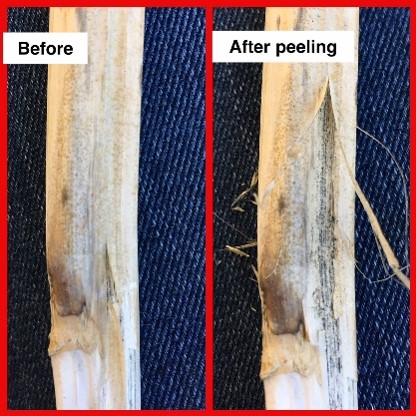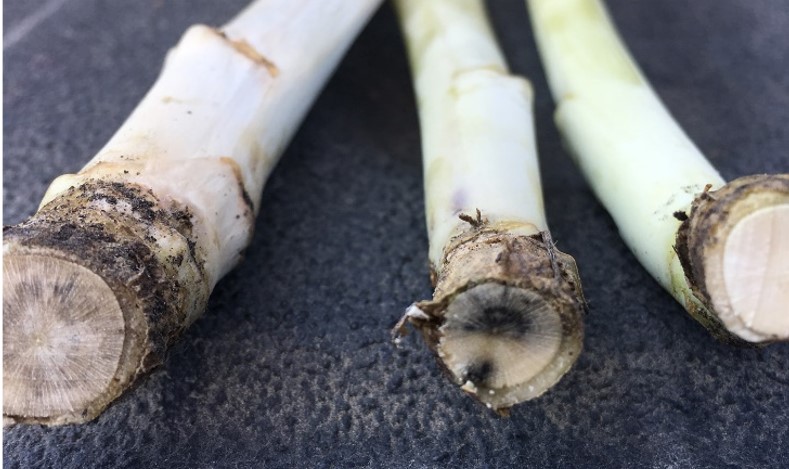- Disease symptoms include leaf chlorosis, early ripening, stunting, and necrosis (shredding of the stem tissue).
- Symptoms are primarily visible on the stem and roots but can also be noticed on leaves and pods.
- Infection can occur in patches or across the entire field.
- The interference of water and nutrient uptake caused by verticillium stripe can cause the crop to show signs of stunting and premature senescence.
- Faint black vertical striping can be seen on the stems which can appear darker or more obvious when rubbed.
- Peeling back the epidermis and outer cortex of the stem, the striping will become more obvious farther into the maturation process due to the tissue dying below the stem surface.
- Once the plant is fully ripe, the stem peels to reveal tiny black microsclerotia, which can resemble ground pepper in appearance.
Figure 1. Before and after peeling epidermis to reveal microsclerotia
- These microsclerotia remain on the plant stem or fall to the soil. Those in stems are released in the soil as the stems decay.
- Microsclerotia are hardy and can survive in the soil for many years.
- Microsclerotia can move with surface and ground water, through wind dispersal of infected soil or crop debris, equipment contaminated with infected soil or crop debris, seed contaminated with infested soil or crop debris, and people from one field to another.

Figure 2. Peeling epidermis to reveal microsclerotia




